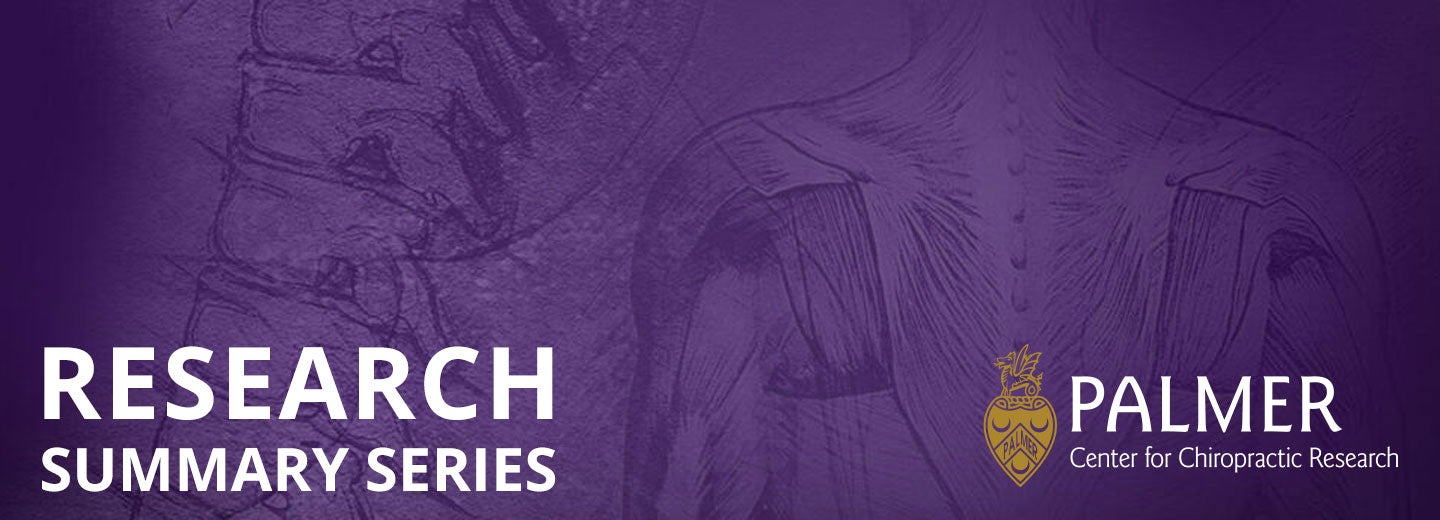An International and Interprofessional Qualitative Study with Spinal manipulative Therapy Providers in Community-Based Settings
Patient safety is a healthcare discipline that focuses on preventing harm to patients during the care process. While spinal manipulative therapy (SMT) is a relatively safe treatment for many patients with spine-related musculoskeletal conditions, SMT is not without its risks and harm has been reported by patients. The purpose of this qualitative study was to describe how SMT providers think about patient safety within their community-based practice settings.
Our study used the SafetyNET Survey, a validated instrument to measure patient safety attitudes and opinions of community-based SMT providers, to support quality improvement. The study surveyed 705 SMT providers, which included chiropractors and physical therapists, with 58 of them contributing with fully written responses to a voluntary open-ended patient safety question.
5 Central Themes and 10 supporting Categories were developed.
- SMT providers are committed to “Doing Our Best for Patient Safety”. Many providers described their main patient safety actions as Avoiding Mistakes and Prioritizing Safety in clinical practice.
- “Putting Patients First” described the important role of patient-centered care. SMT providers sought to maintain patient safety by Developing Relationships and Individualizing Care.
- SMT providers who worked in group settings highlighted “Working & Learning Together” for patient safety. Interprofessional Communication and Collaborative Learning included the ideas of teamwork, staff meetings to discuss patient safety concerns, and continuing education.
- “Organizing Practice Processes” focused on Standardizing Procedures, such as clinic protocols, and Benchmarking Progress through ongoing documentation and evaluation of patient harms.
- “Considering Practitioner Identity” was important for patient safety programs. SMT providers thought that Recognizing Difference between provider approaches was important across and within professional groups. Challenging Fears about SMT held by other health professionals and patients was also warranted.
Take Home Message
Our study concluded that SMT providers do not share a common outlook concerning patient safety. The perspectives chiropractors and physical therapists have about patient safety are influenced by their professional background, clinical experience and environment, and patient factors. Current practice settings may often limit the time and resources practitioners have at their disposal to engage proactively in patient safety initiatives.
Practical Application
To learn how to reduce avoidable harms to patients, read The WHO Global Patient Safety Action Plan.
Reference
Funabashi M, Holmes MM, Pohlman KA, Salsbury S, O’Beirne M, Vohra S, Mior S. (2021). “Doing our best for patient safety”: an international and interprofessional qualitative study with spinal manipulative therapy providers in community-based settings. Musculoskeletal Science and Practice, 56: 102470. PMID: 34735865. https://www.sciencedirect.com/science/article/pii/S2468781221001545?via%3Dihub
View Doing Our Best for Patient Safety as a PDF.
The Palmer Center for Chiropractic Research (PCCR) is dedicated to advancing health care for patients by developing knowledge and translating knowledge that improves the practice of chiropractic. Read more articles in the Research Summary Series at palmer.edu.

